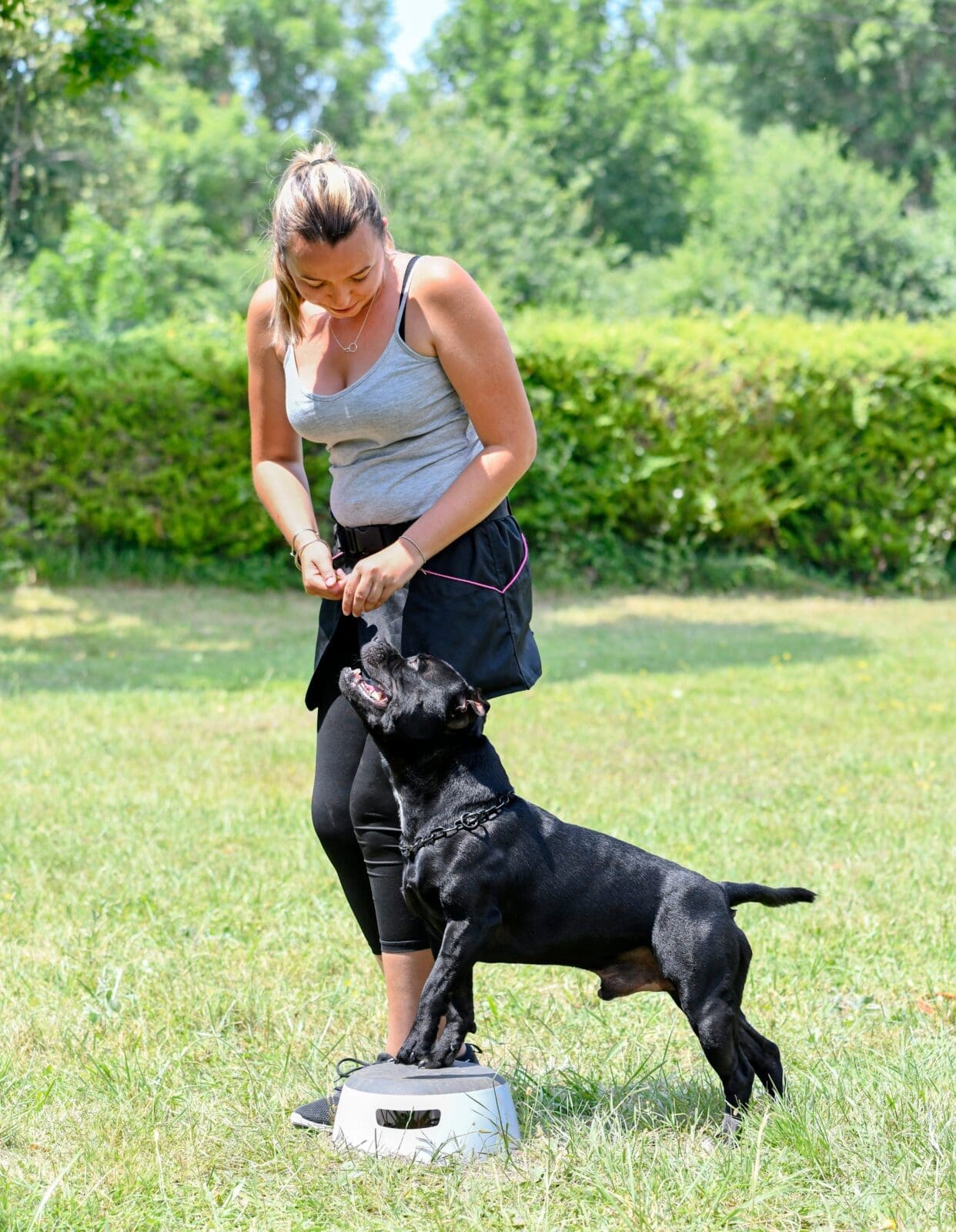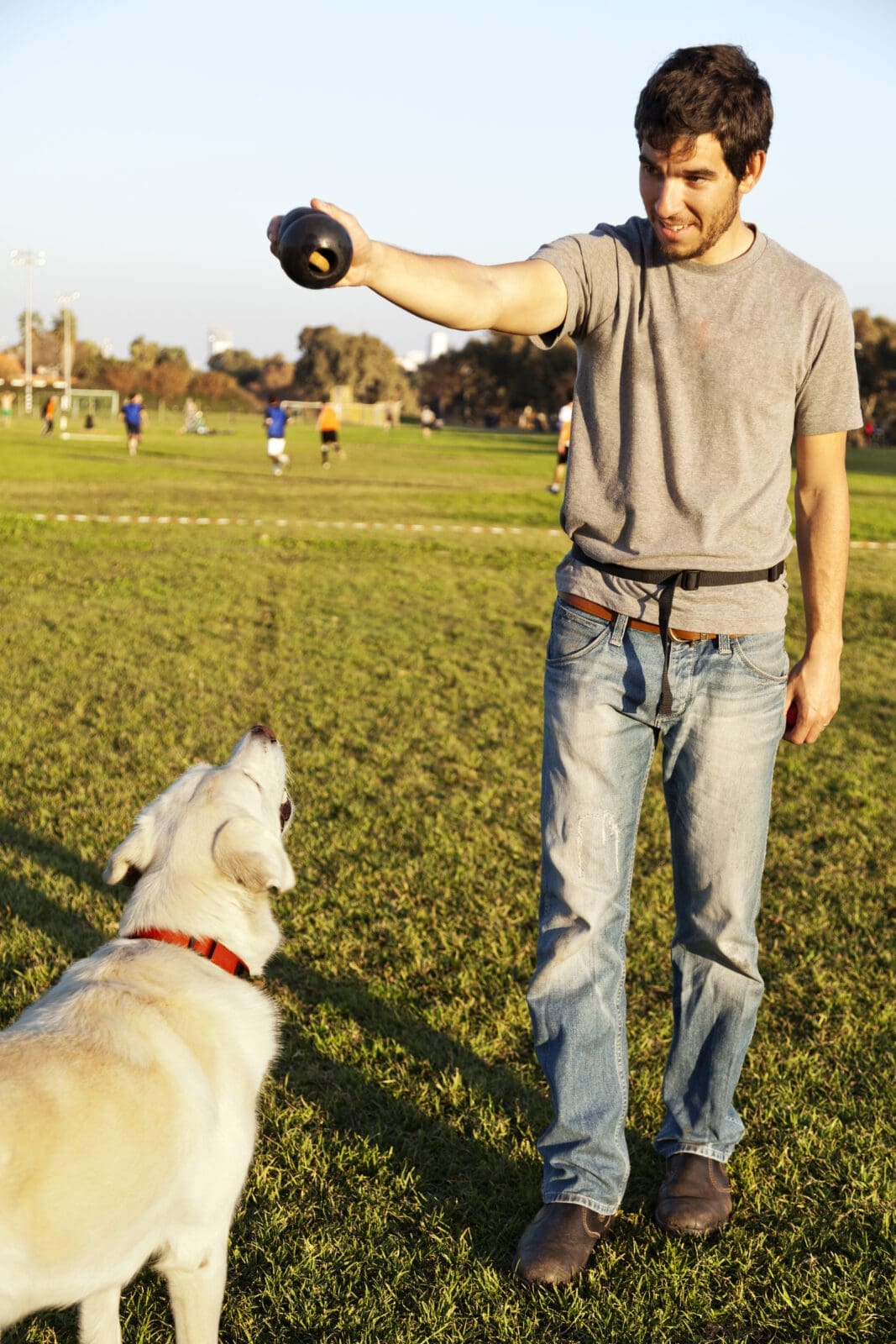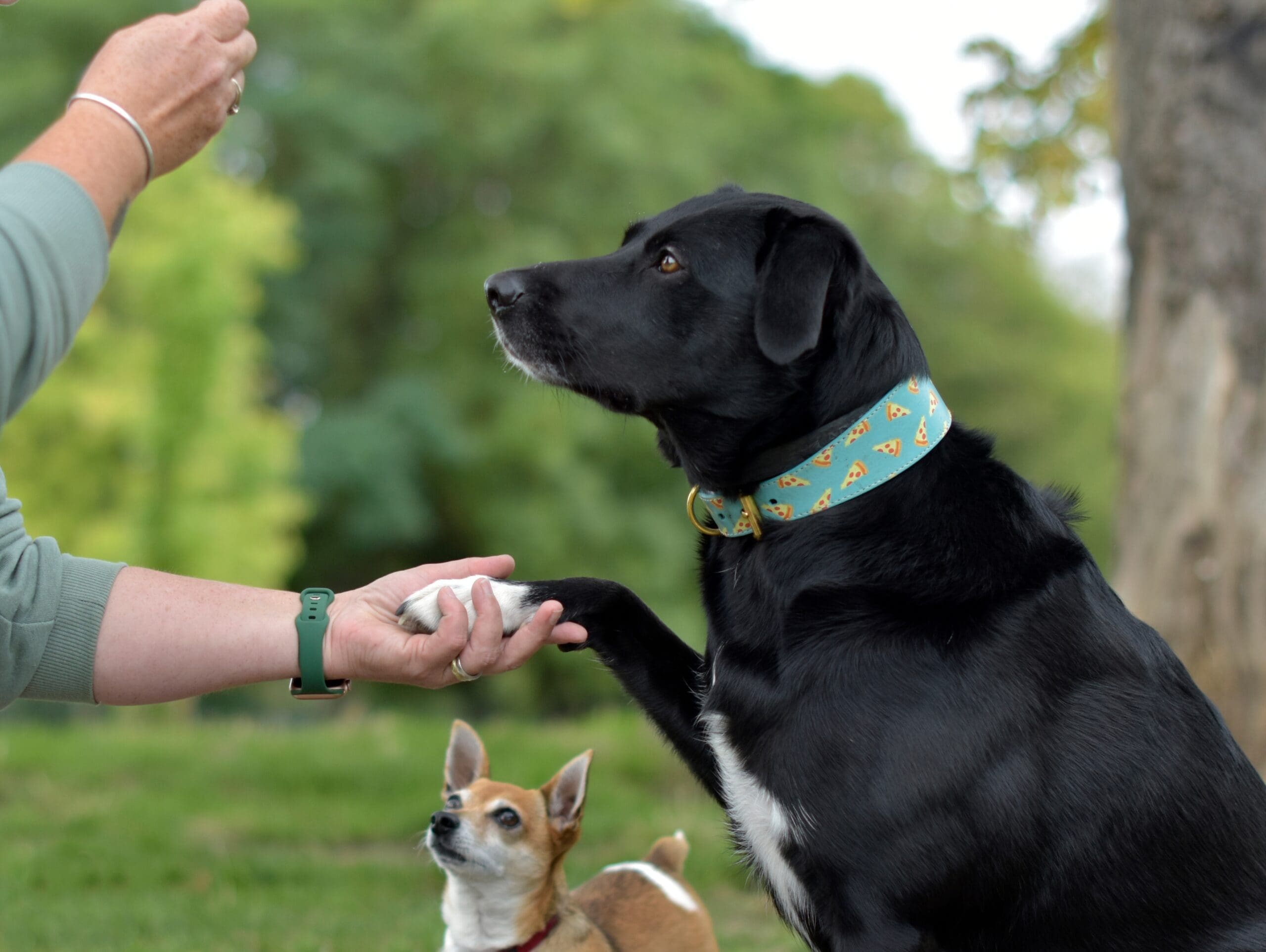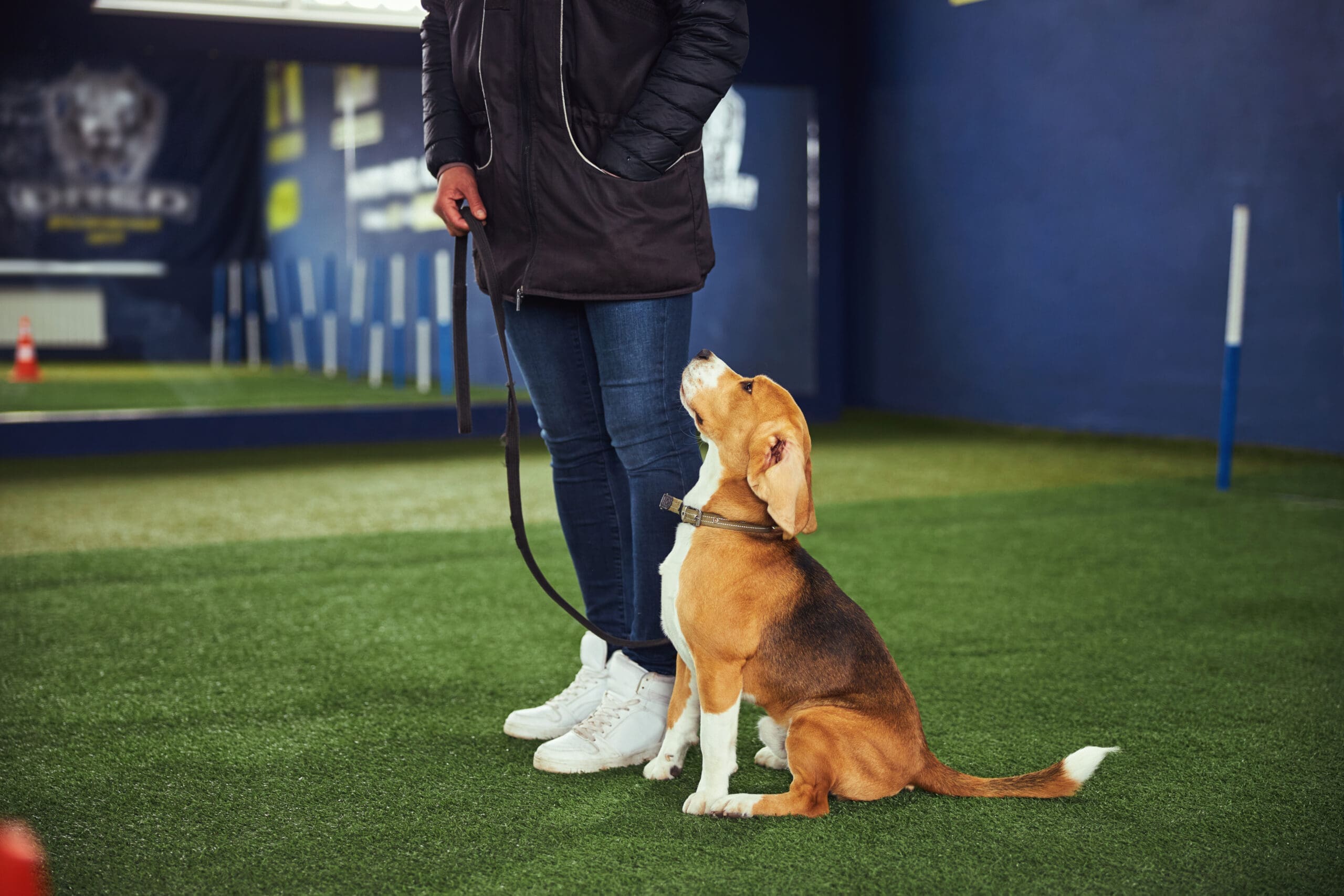Dog Trainer CV Guide
Everything you need to know about getting the perfect Dog Trainer CV
Dog trainers use various techniques to teach dogs commands and behaviours, address behavioural issues and educate owners on effective training methods. It takes a particular type of person to be a dog trainer, requiring patience, empathy and a genuine love for animals. If you want to start a career as a dog trainer or apply for a new role, you must showcase your eagerness and passion when applying for jobs.
When you apply for dog trainer jobs, the first thing that employers and clients will see is your CV. They will be looking to see if you possess the correct qualifications, skills, experience and attributes to be successful in the role. Therefore, when you write a dog trainer CV, you want to ensure it is well-crafted to stand out from other applicants. It should be professional, tailored to each position, concise and well-presented.
In this article, we will provide guidance on how to write a dog trainer CV, what to include, some tips and an example to help you get started. It will hopefully increase your chances of securing an interview and, ultimately, the job.
In this Dog Trainer CV guide
What to include in a Dog Trainer CV
Most, if not all, people have had to write a CV at some point, and many have successfully got an interview invite. The difference between these applicants and those who were unsuccessful would likely be their suitability for the role and the quality of their CVs. Employers and clients do not know you, so producing a high-quality CV is how you create a good first impression and set yourself apart from other candidates.
The predominant information to include in a dog trainer CV is your relevant qualifications, skills, achievements and experience. You want to ensure it is concise and specific to each role you apply for and avoid adding too much information or anything irrelevant. You are basically telling the reader about your academic and professional history and why you are suitable for the dog trainer position. Do not be tempted to send out generic CVs, as it could affect your chances of success.
Knowing where to start and what to include in your CV can often be tricky, but breaking it down into sections can make the task less overwhelming and more manageable. Let us now look at these sections and the information you can include.
Contact information
Let us start with your contact information, which some may say is the easiest part of writing a CV, and it should go at the very top of the page. You want to make it easy for employers and clients to contact you by ensuring these details are clear and up-to-date.
The first piece of information to write is your name. You can add your full name, but most include their first and last names, e.g. “Jane Smith”. Titles such as Mr, Miss, Ms and Mrs are unnecessary.
You can add your job title underneath your name, e.g. “dog trainer”, and where you are based. You do not need to add your full address, just your town, city or county, e.g. “Edgbaston, Birmingham”. Then, add your current phone number and a professional-looking email address.
If you have a LinkedIn profile, a website or an online portfolio, you can include it in your contact information. However, only do so if this information is relevant to the dog trainer position.
Avoid adding your date of birth, a photo, national insurance number and other personal information, such as marital status, gender, nationality or religion. This information is irrelevant and can lead to bias, discrimination and privacy risks.
Here is an example of how you can add your contact information to your CV:
Jane Smith.
Dog Trainer.
Phone: 01234 567890.
Email: jane.smith@example.com.
Address: Edgbaston, Birmingham.
Professional summary (career objective statement)
Underneath your contact information, you should add a brief statement highlighting your key qualifications, skills, experiences, achievements and career goals relevant to the job you are applying for. It is a professional summary, but some may call it a career objective statement, personal statement, or professional profile.
Your professional summary should be impactful and give prospective employers and clients a quick overview of who you are and what you could contribute to the dog trainer position. It should be concise, tailored to each application, and ideally, no longer than five lines. Here are some examples of what to include to capture the attention of readers:
- Professional title – begin with your current or desired job title.
- Years of experience – mention how many years of experience you have in your field.
- Key skills – highlight your most relevant skills and strengths.
- Notable achievements – include any significant accomplishments or experiences that make you stand out.
- Career goals – briefly state your career objectives and what you aim to achieve in the role.
- Passion – demonstrate your love for dogs and dedication to providing high-quality training and care.
Here is an example of a professional summary for a dog trainer:
“Professional dog trainer with 5 years of experience in obedience training, behaviour modification and specialised training for therapy and service dogs. Skilled in positive reinforcement techniques and committed to improving the bond between dogs and their owners. Seeking to leverage my expertise to help more dogs and their families at [Company Name].”
As your professional summary is one of the first things employers and clients will read, it is essential to make it strong and engaging to capture their attention and encourage them to continue reading your CV.
Education
For the next section, you can add your education or work experience. It is your preference, but you may want to consider putting the section first where you have more information, i.e. if you have limited work experience, your education may be better after your professional summary.
The education section of your CV should include qualifications and courses relevant to the dog trainer position and be in reverse chronological order, i.e. most recent. It enables employers and clients to identify whether you have the necessary academic background and training to meet the job requirements and whether you are a suitable candidate.
Here is what to include in the education section of your CV:
- Have a header titled “Education”.
- Start with your most recent education.
- List any specialised courses or obtained certifications related to dog training.
- Mention the degree or course, institution, graduation/completion date (or present if still studying) and grades.
- Include any coursework that is particularly relevant to dog training.
- Highlight practical training, internships or hands-on experience with dogs (where relevant).
You do not need to include lower qualifications, such as GCSEs unless the job posting details them or you have a limited education section and more experience.
Here is an example of an education section for a dog trainer:
Advanced Canine Behaviour Diploma.
Animal Behaviour College, London.
Completed: June 2022.
- Studied canine psychology, behaviour modification techniques and training methods.
- Practical training with over 100 dogs of various breeds.
Certificate in Canine Training and Behaviour.
The Institute of Modern Dog Trainers (IMDT).
Completed: March 2020.
- Covered topics including obedience training, agility training and puppy socialisation.
- Hands-on experience in group training sessions and one-on-one lessons.
Bachelor of Science in Animal Science.
University of Birmingham.
Completed: July 2018.
Grade: 2:1.
- Focused on animal behaviour, welfare and ethics.
- Conducted research projects on canine cognition and communication.
If you have recently left school, are a recent graduate and have limited work experience, this section will typically be longer. However, if you have more work experience with dogs and training, you may want to focus on this section and have a smaller education section.
Work experience
Your work experience or employment history is crucial in your CV. It showcases your hands-on skills and credibility and demonstrates to prospective employers or clients that you can handle various breeds and temperaments, solve behavioural issues and effectively apply different training techniques. It also reflects your expertise, dedication and commitment to the field.
When employers or clients read through your CV, they will assess your suitability and how your previous work experience aligns with their requirements. When adding your work experience to your CV, include it in reverse chronological order (most recent first) and make sure it is relevant or demonstrates transferable skills. You can add relevant paid work experience or voluntary positions, and here are some pointers on what to include:
- Job title: Clearly state your job title, e.g. “Dog Trainer”.
- Employer/organisation name: Name of the employer or organisation you worked for or add self-employed where relevant.
- Location: Town, city or county.
- Dates of employment: Specify employment start and end dates (month/year). If you are currently employed, indicate that by stating “Present”.
- Job description: Briefly summarise your role and responsibilities, and try to focus on what you accomplished. Highlight any specific duties relevant to dog training. Aim for three to five bullet points, and use action verbs to describe your tasks. Here are some examples:
- Conducted individual and group training sessions, specialising in obedience and behaviour modification.
- Assessed dog behaviour and created personalised training plans to address specific issues.
- Successfully trained over 100 dogs, resulting in significant improvements in behaviour and owner satisfaction.
- Utilised positive reinforcement and clicker training techniques to achieve desired outcomes.
- Provided guidance and support to dog owners, fostering strong relationships and trust.
- You can add achievements to your work experience section or have separate sections, which we will look at next.
Key skills and achievements
Employers or clients will want to see that you have the necessary skills to carry out the dog trainer role effectively, which is where the next section comes in. Skills are the abilities and expertise developed through learning, practice and experience.
When you add relevant skills to your CV and tailor them to each job, you demonstrate that you have the required competencies for the dog trainer position and are proficient in the areas employers or clients are interested in. It assures them that you have the necessary knowledge and experience to match their requirements, which can increase your chances of being selected for an interview.
There are two main categories of skills, hard and soft, which are valuable and often complement each other. Include a mix of both in your CV to show employers and clients you are the best fit.
- Hard skills – specific, teachable abilities that can be measured and defined and often acquired through education, training programs or on-the-job experience. Some examples of hard skills for a dog trainer may include:
- Obedience training.
- Behaviour modification.
- Clicker training.
- Puppy training and socialising.
- Positive reinforcement.
- Agility training.
- Dog psychology.
- Aggression management.
- Canine first aid.
- Soft skills – interpersonal and social skills that are more subjective and harder to quantify but are equally important. Some examples of soft skills for a dog trainer may include:
- Patience.
- Empathy.
- Communication.
- Teamwork.
- Problem-solving.
- Time management.
- Customer service.
- Reliability.
You can also use this section to showcase your achievements, which are notable accomplishments or successes you achieved in your previous roles. We will look at how to focus on your achievements later.
It is worth noting that some organisations use Applicant Tracking Systems (ATS), which look for specific keywords relating to key skills and qualifications. Include these in your CV to help pass through the ATS filter.
Other information
Apart from qualifications, skills and experience, several other pieces of information can be included on a dog trainer CV if relevant and you have the space. Here are some examples:
- Professional development – include any certifications, training programs, workshops, seminars or conferences you have attended that are relevant to dog training. Even online courses and reading about the subject can help.
- Volunteer experience – mention any volunteer work you have done with dogs, such as work at kennels and rescue centres. You can also include looking after other people’s dogs, even if it is just for friends and family. It shows you have experience caring for dogs.
- Professional associations – include any memberships in relevant professional associations, such as the Association of Pet Dog Trainers (APDT), the British Institute of Professional Dog Trainers or the Kennel Club.
- Testimonials – where relevant, you could provide positive feedback or testimonials from clients, colleagues or employers that showcase your effectiveness and expertise.
- Projects – detail specific projects or programs you have developed or implemented, such as training programs, puppy classes or behaviour modification plans.
- Publications and presentations – give information about any articles, blogs or presentations you have created or contributed to on dog training.
- Hobbies and interests – mention any hobbies or interests related to dog training, such as participating in dog sports, agility competitions or other canine-related activities. You can also provide details of where you trained your own dog, what you taught them, how you did it, and the outcome, e.g. “Trained my family’s Labrador Retriever, [Dog’s Name], using positive reinforcement techniques, teaching basic commands like sit, stay and come”.
By including these sections, you can create a comprehensive and impressive CV that showcases your qualifications and dedication to dog training.
References
References are important as they provide potential employers or clients with third-party confirmation of your skills, experience and qualifications and can vouch for the accuracy of the information on your CV. They also add an extra layer of credibility, making you a more attractive candidate and giving you a competitive advantage.
The references section of a CV is typically the last, and, like your contact information, it is quite straightforward. It involves listing individuals who can attest to your qualifications, skills, experience and character.
If the job posting does not request specific details of references at this stage and you are struggling for space on your CV, you can add “References available upon request” under the heading. If you are required to provide references, here is how you can add them to your CV:
- Name of reference, e.g. John Smith.
- Their position at the time, e.g. Senior dog trainer.
- Organisation name, e.g. Happy Paws Training Centre.
- Email, e.g. john.smith@happypaws.co.uk.
- Phone, e.g. +44 1234 567890.
- Relationship to you, e.g. supervisor, mentor, manager, etc.
Before you add your references to your CV, you should ask their permission first and ensure their information is current to enable prospective employers or clients to contact them easily.
Tips for writing a Dog Trainer CV
Creating an exceptional CV can help you stand out in the competitive job market. We have covered the specific sections you should include, but here are also some general tips to help you get your CV looking sharp and attract the attention of employers or clients:
- Customise your CV for each job – tailor your CV for each dog trainer job application. Highlight your relevant skills, experience and qualifications that match the job description. Carefully read through the posting, highlight what the employer or client is specifically looking for and incorporate the same language they use where relevant.
- Keep it concise and engaging – think of your CV as a film trailer, i.e. you want to include the best bits rather than giving them the whole film. Employers typically have many CVs to review and will appreciate clear and concise information. Keep your CV around two pages long, focus on relevant information and avoid adding unnecessary details.
- Always be honest – avoid exaggerating on your CV, and do not include any inaccurate or false information, even if you do not meet the job criteria. Always be honest about your qualifications, experience, achievements and skills. Employers or clients will soon be able to tell if you have not been truthful, and the consequences can be severe.
- Use action verbs – start each bullet point with strong action verbs like “managed,” “developed,” “implemented,” or “achieved” to make your accomplishments stand out. Avoid phrases such as “hardworking” or “team player”, as these are overused and lack specificity.
- Use professional and consistent formatting – you can help your CV stand out by:
- Using a clean, professional layout with clear sections, headings and bullet points.
- Using professional, simple and clear language, avoiding slang or overly casual expressions.
- Using the same tense throughout your CV. Typically, past tense for previous jobs and present tense for your current role.
- Avoiding excessive use of colours and fonts.
- Sticking to a simple font like Arial, Calibri or Times New Roman and consistent size, e.g. 10-12 points. Avoid fancy fonts and unprofessional-looking ones.
- Ensuring your CV has adequate spacing to make it more visually appealing.
- Avoiding using photos, as it can distract and lead to bias.
- Using a digital format where possible. Save and send your CV as a PDF to ensure the formatting stays intact when viewed on different devices.
- Make sure you proofread and review your CV – double-check for spelling and grammatical errors and proofread it before sending, as a CV full of mistakes can create a bad impression. Ask a family member, friend or mentor to review your CV and give you feedback.
Employers or clients will be able to separate the candidates who have carefully written their CVs from those who have not. Following these general tips can help you write a well-crafted CV that shines out from the rest.

Focus on achievements
Achievements on a dog trainer CV can showcase your expertise, skills, effectiveness and successful track record. They provide concrete evidence of your capabilities and differentiate you from other candidates, which can impress potential employers or clients.
You can include achievements separately or in your work experience or skills section. It is entirely your choice, but make them relevant to the dog trainer position and stand out. Here is some additional guidance to help you highlight your achievements effectively:
- Identify your key achievements – reflect on your career and identify specific accomplishments demonstrating your skills and expertise. Focus on achievements that positively impacted the dogs, their owners or the training organisation. You can also place the most impressive and relevant achievements at the top of each section to ensure recruiters see them first and make a strong initial impression.
- Tailor your achievements to the job description – customise your achievements to align with the job you are applying for and highlight accomplishments most relevant to the job requirements. Tailoring your CV demonstrates that you understand the employer’s or client’s needs and have the skills to meet them.
- Use action-orientated language – start each bullet point with a strong action verb to clearly describe your accomplishments and create an impactful impression. For example, use words like “implemented,” “improved,” “led,” “managed,” “increased,” “reduced,” “developed,” etc.
- Highlight specific skills – tie your achievements to particular skills and techniques you used to demonstrate your proficiency in various training methods. For example, “Successfully used positive reinforcement techniques to train 50 rescue dogs for adoption”.
- Quantify your achievements – use numbers, percentages or other metrics to clearly demonstrate the impact and provide concrete evidence of your contributions. Here are some examples:
- “Trained over 100 dogs in basic obedience, achieving a 95% success rate in command retention”.
- “Implemented behaviour modification programs for aggressive dogs, resulting in a 90% reduction in aggressive incidents”.
- “Developed and led group training classes, increasing client enrolment by 30% within six months”.
- “Successfully rehabilitated 20 rescue dogs, facilitating their adoption into loving homes”.
- Provide context and results – explain the context in which you achieved your accomplishments and the results they produced to show that your achievements were not just isolated events but part of a broader impact. For example, “Developed a customised training program for a dog with severe anxiety, resulting in a 70% improvement in behaviour within three months”.
When you focus on your achievements using the pointers provided, you can demonstrate to potential employers or clients that you have a proven track record of dog training, which makes your CV more compelling and establishes trust and credibility. It can increase your chances of securing the job or desired clients.
Describe your experience
When we talk about your experience on a CV, we refer to your work experience/employment history, internships, volunteer positions and other professional or relevant roles. When describing your experience, you showcase your practical skills and knowledge in dog training and what you can bring to the role. You also convey to the reader why you are the best fit for the dog trainer position and the difference you can make to the organisation or client. You will typically cover this in the following:
- Professional summary – you will briefly mention your relevant experience in your summary by highlighting your key skills, achievements and overall expertise concisely and compellingly.
- Work experience/employment history – you will provide an overview of your previous roles, including the type of training you provided, the settings you worked in, and your key responsibilities. Use bullet points to list your key responsibilities, focusing on the most relevant and significant tasks.
- Achievements – you will detail what you accomplished in each role and how these experiences relate to dog training. It will show employers and clients how you use your know-how to achieve actual results.
- Voluntary experience – where relevant, you will include any voluntary positions working with dogs and the skills you gained from each role.
Before describing your experience, review the job description to tailor each section of your CV to your specific experiences and the job you are applying for. Only include experiences relevant to the dog trainer role.
You may wonder how to describe your experience if you are applying for your first dog trainer role. If you are in this situation, do not fret; you can still create a compelling CV by highlighting your transferable skills, relevant ualifications and passion for dogs. Here is some guidance on what to do in this situation:
- Education – include any relevant qualifications, i.e. related to animal care, behaviour or science.
- Volunteering and internships – If you have volunteered or interned in roles related to animal care, especially working with dogs, include them in your experience. Mention your role, the organisation, dates and an overview of your responsibilities.
- Transferable skills from other jobs – highlight experiences from other roles where you gained transferable skills useful for dog training, such as customer service, communication, teaching, time management, planning, etc.
- Personal attributes – demonstrate personal qualities important in dog training, such as empathy, patience, reliability and a willingness to learn.
- Professional development and certifications – mention any workshops, seminars, courses or additional training related to animal handling, first aid for animals or animal welfare.
- Extracurricular activities – include any extracurricular activities and personal interests relating to dog training, such as participation in dog sports, pet sitting, dog walking, dog clubs, etc.
- Demonstrate passion – write a professional summary emphasising your relevant education, transferable skills and commitment to the field. For example, “Enthusiastic and dedicated individual with a strong passion for dog training and animal welfare. Possesses excellent communication, problem-solving and patience skills, gained through various volunteer roles and personal experiences”.

Tailor your CV to the Dog Trainer position
Tailoring a CV means customising it to align with the specific dog trainer position you are applying for, and it is crucial as it demonstrates to employers or clients that you have paid attention to the job posting and have taken the time to understand their needs and values. It also shows that you are enthusiastic about the role and are passionate about training dogs.
When tailoring your CV, you want to highlight your relevant qualifications, skills and experiences to stand out from other candidates. Here are some tips to help you customise your CV:
- Analyse the job description – carefully read the job description and identify key skills, qualifications and experience required for the position, as this will help you understand what the employer or client is looking for in a dog trainer. Use this information to include relevant aspects of your academic and professional history.
- Conduct research – if you are applying for a dog trainer position with an organisation, look at their website, social media feed and any recent news. Mention how you fit their goals, ethos, values, specific needs, and the contribution you could make. If a client has posted an advert for a dog trainer, see if you can contact them and ask them for further details on the dog(s), situation and anything else that could be useful in your application.
- Customise sections of your CV – there are several ways to do this, e.g.:
- Modify your professional summary to reflect your suitability for the role and passion for dogs. Address how your background, skills and values align with the employer or client’s needs and highlight why you are a perfect fit for the role.
- Customise the bullet points in your work experience section and focus on relevant roles and responsibilities from your previous jobs. Use the same language as the job description when possible, e.g. if it details working with specific dog breeds, provide information on your experience.
- Use specific achievements relevant to the role, e.g. if the job posting details working with aggressive dogs highlight related achievements. For example, “Successfully reduced aggressive behaviour in 80% of dogs through tailored intervention programs”.
- Match your skills section to the keywords in the job description and focus on those most relevant to the position, e.g. if the job requires experience in agility training, make sure to highlight your proficiency in that area.
- If the job description mentions specific certifications, training or professional memberships, include these in your CV where relevant.
- Use keywords – as stated, some organisations use applicant tracking systems (ATS) that filter applications based on keywords. As you read through the job description, highlight any keywords in the job posting and incorporate them in your CV where relevant. It increases your chances of passing through these filters and getting an interview.
- Do not forget to tailor your cover letter – customise your cover letter for each application, highlighting specific experiences, achievements and skills that align with the role. Use examples from your CV to support your claims and detail what makes you a perfect fit for the dog trainer position.
By tailoring your CV, you create a great first impression with employers or clients and have an increased chance of getting an interview invite and even the job.
Good luck!



